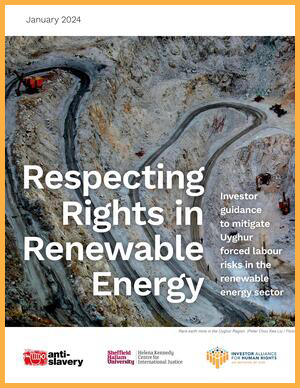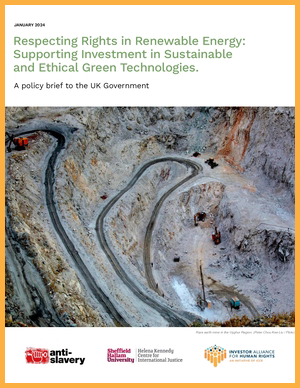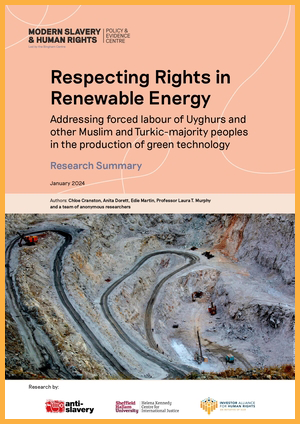
Respecting Rights in Renewable Energy: Guidance to Address Uyghur Forced Labor Risks
As the solar and electric vehicle industries lead the world's transition from fossil fuels, many of their vital inputs are sourced from the Uyghur Region where the Chinese government imposes forced labor on the native Uyghur, Turkic, and Muslim-majority peoples. As a result, investors seeking to facilitate a just transition while supporting the safeguarding of human rights have encountered challenges in addressing this conflict.
Addressing the green technology industry's exposure to Uyghur forced labor is a vital step towards building a more equitable world that protects both the planet and the rights of its inhabitants.
The following documents, co-authored by the Investor Alliance for Human Rights, Anti-Slavery International, and Sheffield Hallam University and funded by the Modern Slavery and Human Rights Policy and Evidence Centre, seek to provide investors, policymakers, and businesses with the tools on how to mitigate Uyghur forced labor risks in the renewable energy sector.
Our press statement announcing the launch of the Guidance is here.
On January 25, 2024, we launched our work with a webinar for investors discussing the following documents and how investors can mitigate exposure to Uyghur forced labor.

This investor guidance will provide investors with tools to better understand and address the risk of exposure to Uyghur forced labor in their green technology holdings. Please also refer to the annex to the guidance that compiles key current and forthcoming regulations from around the world on human rights, due diligence, and green investments.

This briefing is designed for policymakers in the UK government on how regulation can facilitate meaningful action from the business and investor community on this issue.

This summary covers the findings of the research undertaken for the guidance and the policy brief on approaches to addressing state-imposed Uyghurs forced labor in the renewable energy sector.

This presentation accompanies the launch webinar on January 25. To view the full webinar, click here.